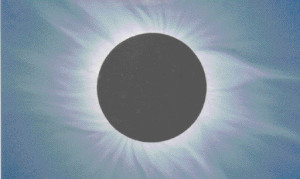By Susan Bromley
Staff Writer
Brandon Twp.- Ken Bertin has traveled all over the world to see a total solar eclipse, an event that is over in just a few minutes.
He has viewed the event, in which the moon passes between the sun and the Earth, obscuring the sun, ten times— in India, Mexico, Libya, Bolivia, China, Australia, Spain, and twice in South Africa. On Aug. 21, he won’t have to leave the United States when, in the first time since 1979, a total solar eclipse can be viewed in a path across the continental United States.
“You can see all the pics you want to see of a total solar eclipse, but it’s nothing like being there,” said Bertin, who has also enjoyed seeing man-made structures in the places he has traveled, including the Taj Mahal, Machu Picchu, and the Great Wall, but said he travels to all these places on Earth to gaze upward at what is above. “I am blown away by eclipses. Everyone has a hobby, my hobby is a passion.”
The West Bloomfield resident and member of the Warren Astronomical Society will share his passion when he presents, “Preparing for the August eclipse,” at 7 p.m., Aug. 2, at the library, 304 South St.
Bertin’s fascination with astronomy began when he was just 6-years-old. Now 71, he is a financial planner by trade and also officiates high school and collegiate sports, but studying space remains his first love. He has been a Warren Astronomical Society member since 1971 and has given approximately 300 presentations on a variety of celestial topics, including ones about famed astronomers including Galileo and Copernicus, as well as ones regarding size and distance in space. The presentation he gives on eclipses is his favorite, however, and at the Aug. 2 event, he plans to explain the different types of eclipses, focusing on the solar eclipse, how it occurs and suggestions for viewing.
In Michigan, the eclipse will be partial, with about 80 percent of the sun covered at its zenith. Bertin will supply attendees of his presentation with special glasses, which are essential if viewing the partial eclipse. Anyone not within the path of totality, which will extend across the country from its entrance point in Oregon to South Carolina where it will exit, will need eye protection to watch the event.
Those who view the total solar eclipse will see the moon completely obscuring the sun, resulting in observation with the naked eye of colorful emissions from the chromosphere, coronasphere and prominences— flares on the sun.
The syzygy, or moment when three celestial objects, in this case, the sun, the moon, and the Earth are perfectly aligned, will last only between 2 minutes and 2 minutes and 40 seconds.
“Photos don’t do a total solar eclipse any value at all,” said Bertin. “Your eye has the gift of seeing the entire range of the visual spectrum.”
When choosing where to view a total solar eclipse, Bertin takes into account two main factors— clear skies and political stability.
“When I went to Libya in 1996, it was much calmer (politically) then,” he said. “Qaddafi (then-dictator of Libya) invited foreigners in. He was an astronomy buff.”
This year, he plans to view the total solar eclipse from Casper, Wyo, where he will also be attending an astronomy conference.
What will count most for this solar eclipse is absence of clouds, said Bertin, who notes that weather patterns in August are not as tough as other months. He also feels Casper has an advantage being to the east side of a mountain range that blocks adverse weather to some degree. Still, he will be prepared to leave Casper and go elsewhere if the forecast the day before tells him viewing conditions will not be ideal.
“I can sleep in the car and get to a place where it will be clear,” said Bertin, who might then head for Carbondale, Ill., where the total eclipse is estimated to last about 2 minutes, 40 seconds. “A total solar eclipse is visually stunning. It is to me, the most spectacular natural event you can experience.”
For anyone viewing the solar eclipse, whether total or partial, he advises that the best way to watch is to take a lawn chair, lay down, don’t take pictures, and just enjoy a moment you will never forget.
What he is most commonly asked after someone sees a total solar eclipse for the first time is, “When is the next one?”
After Aug. 21, the next total solar eclipse visible from the continental United States won’t arrive until 2024.
For more information or to register for the free Aug. 2 library program, “Preparing for the August eclipse,” visit www.brandonlibrary.org or call 248-627-1461.
